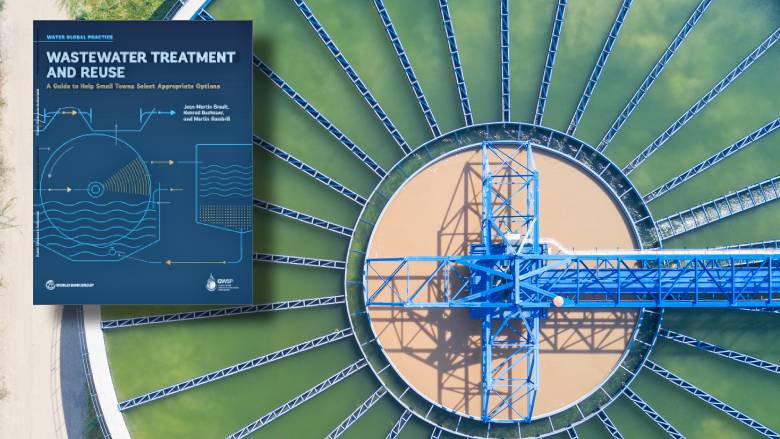Over the past few decades, the explosive growth of megacities has captured the attention of researchers, economists, and urban developers, while the world’s small towns -- and the particular challenges they face -- have been largely overlooked. With almost half of the world’s urban dwellers residing in settlements with fewer than 500,000 inhabitants, we can no longer neglect small towns and their specific needs in terms of infrastructure, services and housing. In low-and middle-income countries (LMICs), these towns are growing rapidly and struggling to meet the increased demands of wastewater collection and treatment. To avert public health crises and continued environmental degradation, small towns are actively seeking safely managed sanitation solutions, appropriate for their scale, institutional capacity, financial resources, and overarching needs.
A new World Bank guide published, Wastewater Treatment and Reuse: A Guide to Help Small Towns Select Appropriate Options, delves into the considerations for small town wastewater treatment. Targeting engineers and managers responsible for wastewater service provision, the guide provides an outline for identifying and selecting appropriate wastewater treatment processes for these types of settlements.
Small towns in LMICs create a unique challenge, as they often connect urban and rural areas, and can play a strategic role in bridging the gap between wastewater collection and treatment. For this to happen, appropriate wastewater treatment solutions should be selected to allow small towns to cope with the issues that arise from providing services without the potential for economies of scale, and with limited human and financial resources to fulfill the associated operation and maintenance requirements.
Small-Town Wastewater Treatment addresses the specific context of small towns with a suggested five-step approach to exploring appropriate wastewater treatment technologies. Case studies applying this approach in El Salvador, Morocco and Vietnam provide specific examples of how projects in different regions have used the methodology to select and apply different criteria. Key factors in the decision-making process are highlighted, such as treatment facility design, possibilities for reuse, and receiving water quality. Drawing on the principles of the Citywide Inclusive Sanitation (CWIS) approach, the guide also helps readers navigate how to define the characteristics and environment of a given town that will impact technology choice.
Identifying appropriate wastewater treatment solutions for small towns requires first and foremost an acknowledgement that these settlements provide a different reality from both large urban centers and rural areas. Sanitation engineers and managers must think beyond conventional technologies and possess an understanding of how local constraints on human and financial resources, road connectivity, and available inputs, such as chemicals and replacement parts, could influence technology choice.
As we continue to work towards achieving the Sustainable Development Goals, small towns remain at the heart of the challenge of the “no-one left behind” objectives. Finding appropriate wastewater treatment solutions for these towns, which lie at the nexus of rural and urban dynamics, will be an important step in establishing a water-secure world for all.



